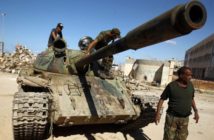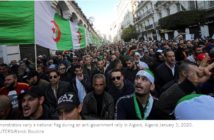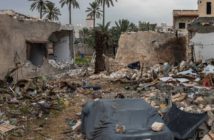Daily Star
Kamal Gaballa
IS it true that all the “Arab Spring” has done has been damage, death and destruction as well as the occasional violence and despair?
Is it right that the democracy, freedom and social justice that people across the Middle East called for about three years ago have turned into nightmares?
As usual, local, regional and international media have dedicated a generous amount of their time for evaluating the outcomes of the Arab Spring and its consequences in the past three years.
The two questions above were brought up by Alkhaleej Newspaper, based in the United Arab Emirates, which has claimed that the Arab Spring has only been negative.
Similarly, Britain’s The Economist mentioned that there is an increasingly deepening disappointment in the Middle East because the Arab Spring only produced extremism, instability and violence after the happy scenes of the downfalls of tyrannies.
Also, prominent Arab author Jihad al-Khazen said in his column in the London-based Al-Hayat that the situation is very devastating in many Arab countries and expected conditions to worsen in 2014.
Khazen expected this: Ongoing tragedy in Syria, failed peace negotiations between Palestinians and Israel due to its extremist right-wing government, no democracy in Libya, civil war in Sudan leading to another division, Egypt under threat if it can’t defeat terrorism and turn into a democratic state, and finally a crisis between Iran and other countries over nuclear power.
Meanwhile, a local newspaper has predicted the failure of the Islamist project, which Turkey’s current regime follows and the Muslim Brotherhood was also founded on.
The Islamist agenda, including the Turkish-Brotherhood cooperation, rose at the beginning and occupied more seats than ever. However, by the winter of 2013 the tables had turned and political Islamism had lost a lot of its popularity in the region.
Egypt
The Muslim Brotherhood, which won in the five elections that were conducted after the downfall of Hosni Mubarak in 2011, has now been declared a terrorist illegal organisation.
The Economist had quoted an Egyptian citizen, who lives in Cairo and works as a barber, saying that what happened was not an “Arab Spring” but a revolution against the people!
The magazine pointed out that 2014 will see the establishment of a new Egyptian system that looks democratic but will continue the same practices of an oppressive and corrupt regime — economically and administratively.
Tunisia
The Islamist “Al-Nahda” (The Renaissance) movement is offering one concession after the other, fearing the fate of the Muslim Brotherhood in Egypt — this was seen through the resignation of the coalition government and the announcement of another government until new parliamentary and presidential elections are conducted this year.
Observers have noticed that Tunisia’s celebrations of the third wave of its uprising on December 17 took place in the absence of President Moncef Marzouki in light of the rising disappointment and frustration facing the country.
On this occasion, in a speech to those celebrating, widow of activist Mohamed Brahmi, who was killed on July 25, called for the importance of freeing Tunisia from the gangs of the Muslim Brotherhood and their oppressive tool embodied in the Salafi/Jihadist movement.
Meanwhile, Tunisian protesters gathered in front of the government’s headquarters to call for the downfall of the Islamist state, carrying banners that read: We will not rest or give up so that Islam does not rule.
Libya
The rival militias in Libya are run by political Islam, which are fighting in the face of the coalition of national forces which won many seats in the first post-Qadaffi parliament and chose a liberal politician to head the government as prime minister.
The headquarter of the Justice and Development Party, the Muslim Brotherhood’s arm in Libya, has been attacked and raided over the past year, which led Islamist leaders to warn against creating a similar situation to Egypt where the Brotherhood are excluded from political life — which in their opinion may lead to catastrophic results.
Yemen
Devastating waves of violence, which has nothing to with the Arab Spring, are taking place — with the bloodiest of events being organised by the terrorist Al-Qaeda — not to mention attacks organised by the deposed president Abdullah Saleh.
Generally, the more accurate description of the “Arab Spring” in the region in the past three years until date is: political, social and economic deterioration.
That’s what has been confirmed by Arab and foreign experts in the field of social development in a meeting held in recent weeks in Lebanon’s capital of Beirut.
The experts said that Arab countries, which witnessed uprisings, are now facing a very critical situation and stressed on the importance of writing new constitutions that implement social justice and equality, and guarantee popular participation and consensus on basic principles.
A study discussed at the meeting indicated that countries that witnessed uprisings have been hit hard by social and economic crises over the past three years.
The study was under the title: Promises of the Arab Spring – Citizenship and Civic Engagement in the Transitional Phases, and was organised by the social development committee of Economic and Social Commission for Western Asia of the United Nations (ESCWA).
It showed that regional production in the region had decreased from 4.2% (in 2010) to 2.2% (in 2011) while unemployment and poverty rose.
It also showed that more than 2,400 schools were destroyed in Syria by the end of 2012 and that the education of about 1.2 million children was delayed in Libya due to the political struggle, while in Yemen 90,000 children are deprived of education because 50,000 students cannot attend their schools in Aden.
The study recommended the drafting of new constitutions that include all the different factions of society, which implement social justice and encourage civic involvement during peaceful transitions.
It stressed on the important role played by civil society in these Arab uprising, especially in light of the dramatic rise in the number of initiatives concerns with civil rights, etc.
The study also included a large number of graffiti drawings, which had a great impact on these uprisings as young people depended on them to express their opinions freely and independently.






